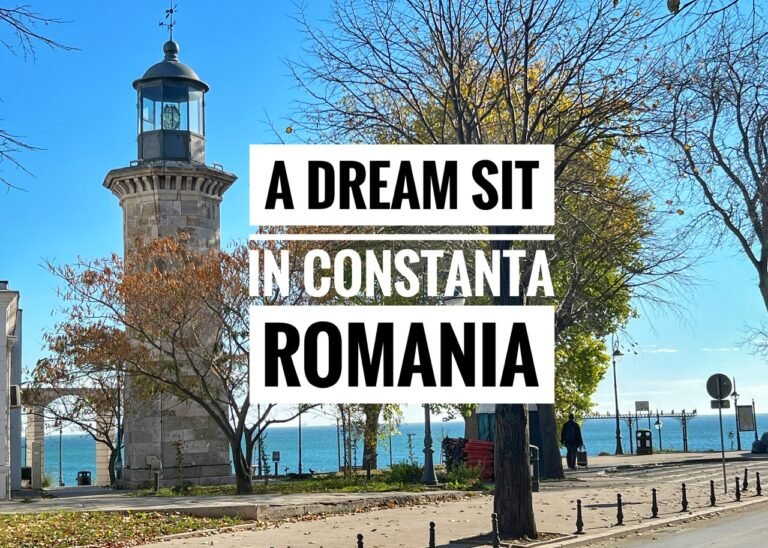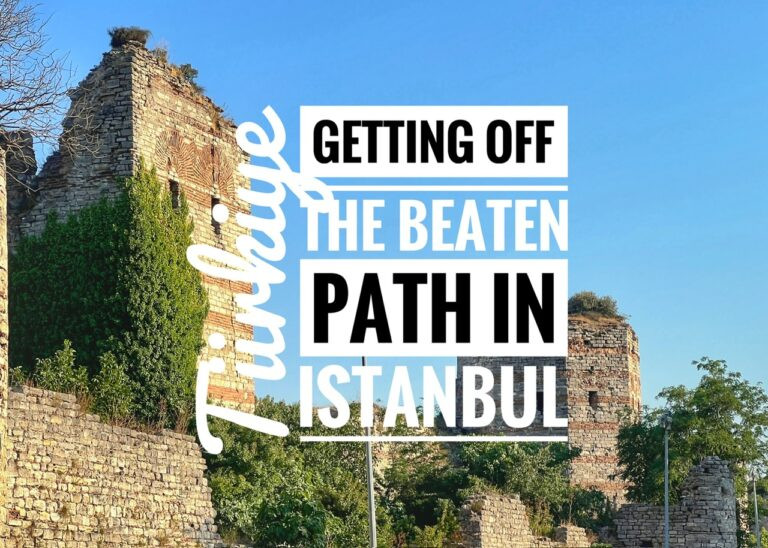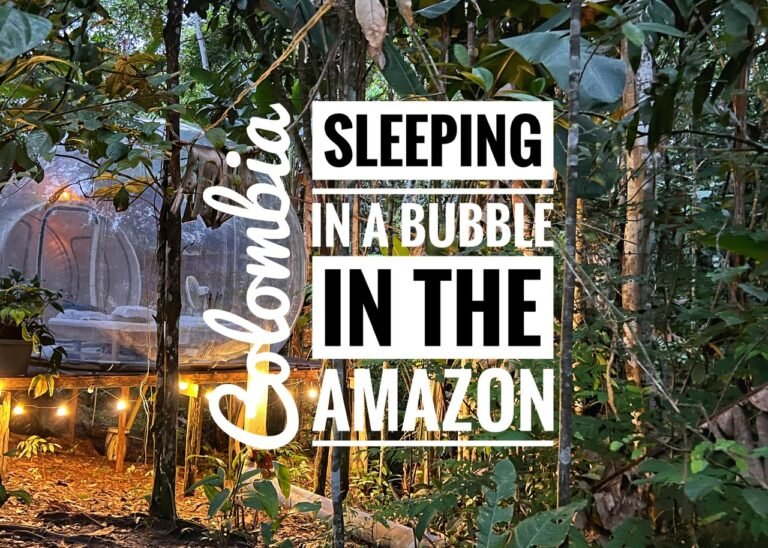
The Market Town of Otavalo
From Mindo, we headed two hours east back through Quito, and another two hours north on a bus so new that the plastic was still making obnoxious noises on every seat when you shifted. We were heading to the famous market town of Otavalo for a night of which would be our last stop in Ecuador. ($13/both legs/two tickets.) Like many places along the Andean belt in Ecuador, Otavalo is surrounded by volcanoes including the beautiful Imbabura which hovers over the iconic Laguna Cuicocha. It’s a really lovely setting.

Although we didn’t have time to fully explore the area, we at least got to see its beauty coming in on the bus. There are also many waterfalls and trails throughout.
But the reason that most tourists come to Otavalo is the Saturday Artisan Market, which is the largest of its kind in all of South America. Although we weren’t there on a Saturday, we were still able to experience the smaller daily market which offers handmade crafts and textiles of incredible quality. This is the difference with this market…the quality is superb.

The Otavalo Market is authentic and dates back to pre-Incan times. Think the Incans were wearing these Hammer pants?!
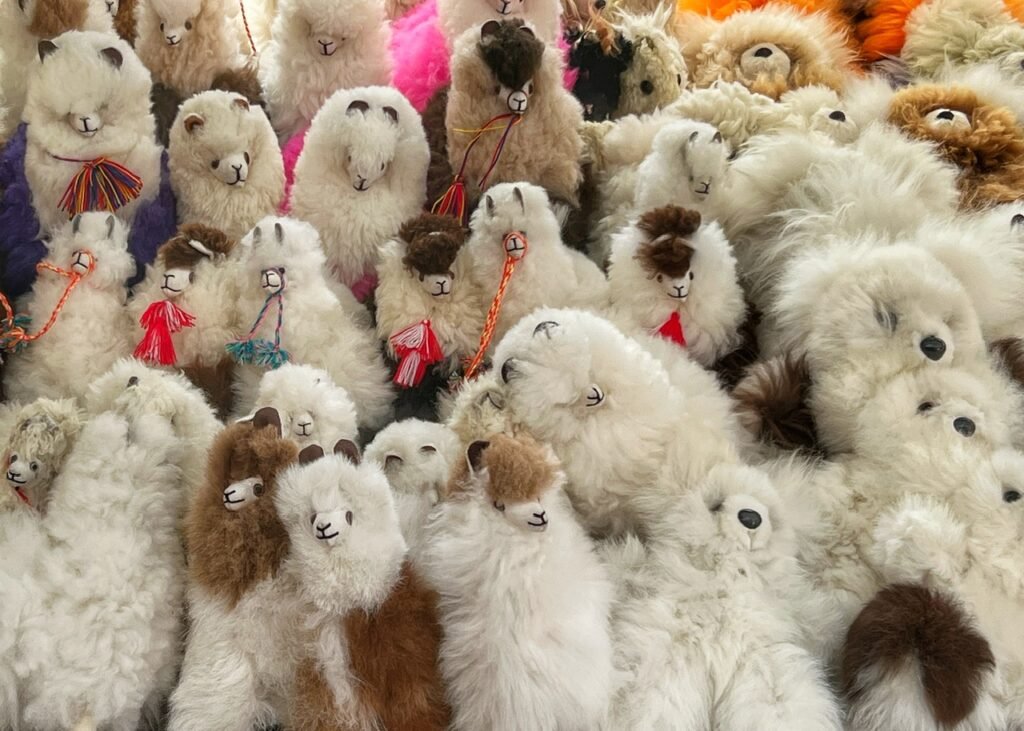

Locals came to trade food, woven products and probably fuzzy alpacas and llama toys for centuries. The quality and selection is phenomenal.


It’s always times like these when we wish we could buy things! But, being that we’re home-free and have limited backpack room, we continued to “solo mirando.”

Wow. That’s a cozy looking blankie. Perfect for those cold Andean nights!

We stayed at Hostal La Rosa in a private room/bath for $17.


They had an old-school Ecuadorian style diner, with lots of fun photos from around the country, where we had our complimentary breakfast which was quite sizeable and delicious. They even had barista machine to give us a rare shot of foamy milk in our coffee and tea.
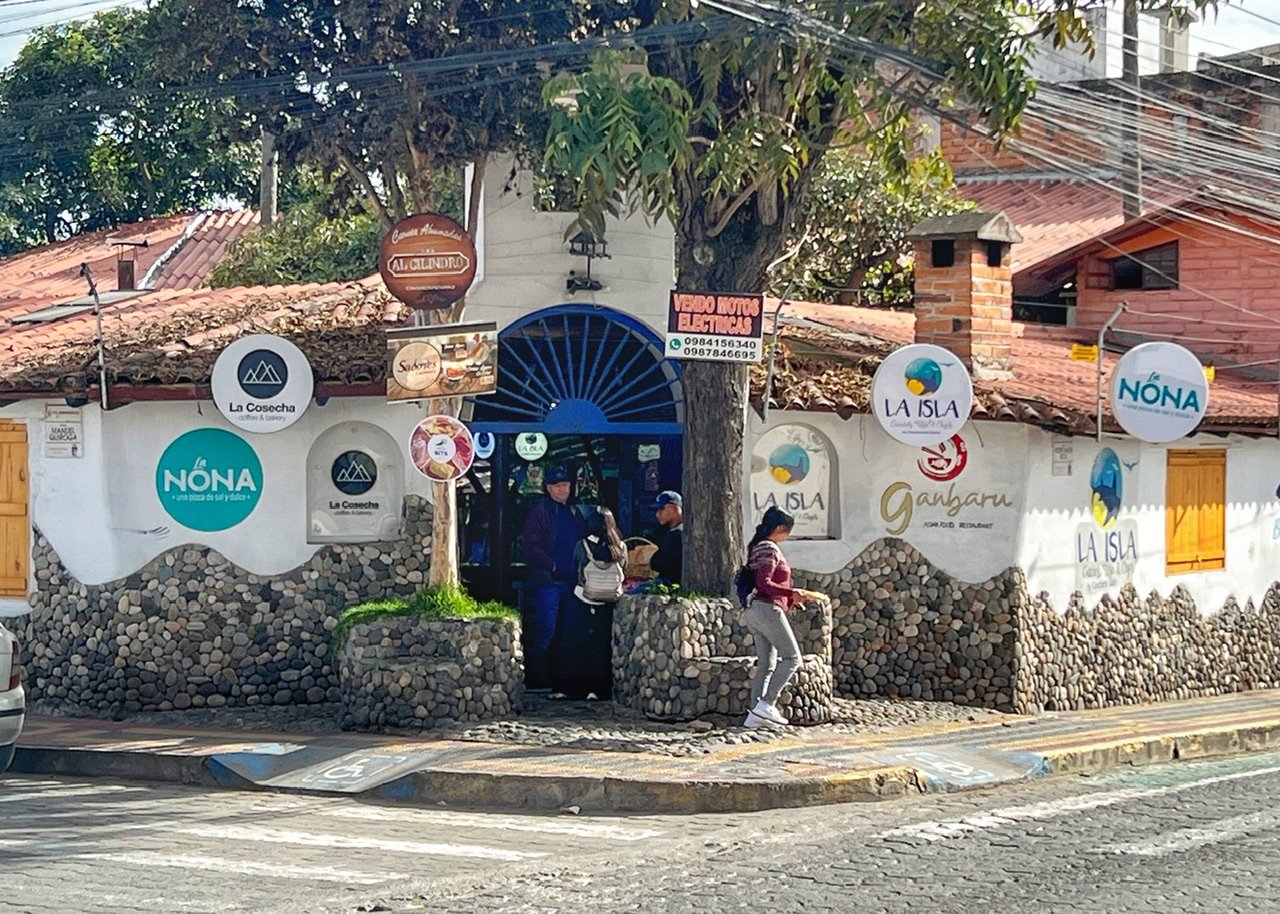
Across the street from our hotel, the night before, we went to a food court called La Isla which was filled with overpriced but yummy Gringo delights like poke bowls. We shared one of these for $10 and then went to the local food market where we got empanadas for $.75 to fill the rest of our tanks.

The view of Otavalo as seen from the roof of our hostal.

We’ve realized that Ecuador is known for having catchy statues in its intersections. We walked by one of these called the Monumento a los Danzantes (Monument of the Dancers) on the way to catch our next ride. They seemed like they were having fun.
Heading to the Ecuador Border: From Otavalo to Tulcan
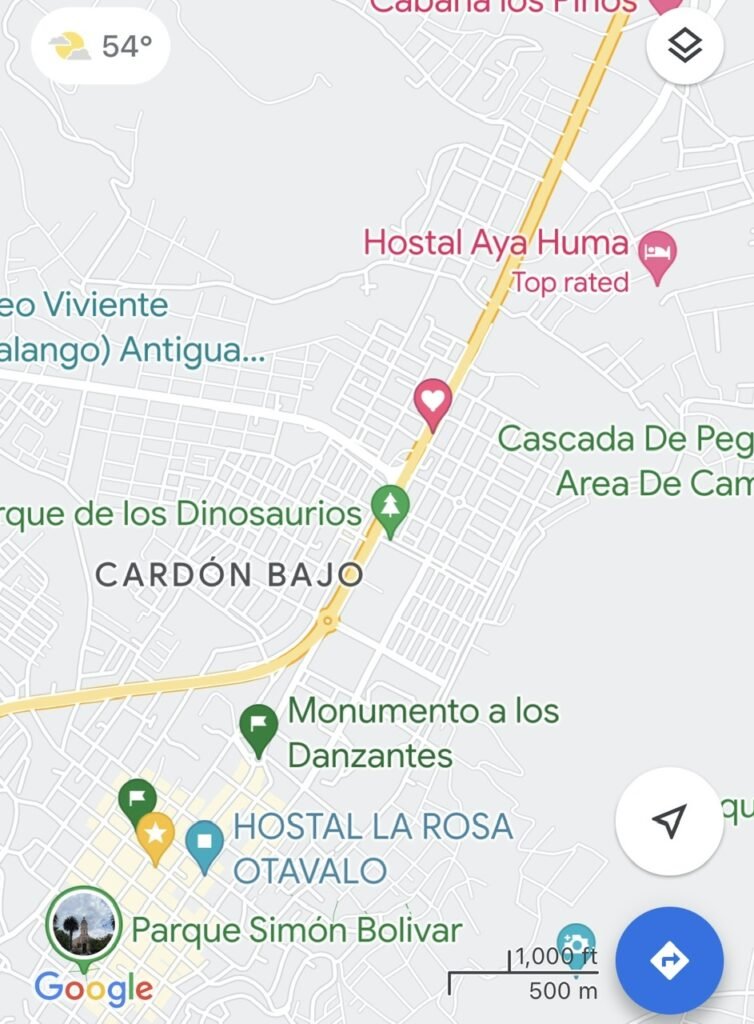

After seven weeks in Ecuador, it was time to navigate to one of our favorite countries in the world for the third time…ColOmbia! (Don’t forget the “O”) But this time, we would be entering via land border, which is always a vastly different experience. To do this was reasonably easy and safe. We had to take a bus down the PanAmerican Highway to the Ecuadorian border town of Tulcan ($4.50/each) take a collectivo (mini bus) to the border ($.75) stamp out, walk across, stamp in and then grab another collectivo to the town of Ipiales ($.71).
There are two ways to get to the border town of Tulcan from Otavalo. You can go by the side of the main road, (where the heart is) for a direct bus. Or, you can go to the bus station and go through Ibarra, which takes an hour longer.
The bus was packed so for the first hour, we got to sit upfront with the driver. It was here we saw two things we didn’t wanna see: the driver on Facebook and the driver’s assistant throwing trash out of the side of the bus. 🙈 Always an adventure!
We were driven to the bus station in Tulcan which was about a 15-minute walk to the historic center.

In the town center of Tulcan, we immediately knew we were getting close to Colombia based on the adorable blue and white church, as well as…


…the pops of color in our chosen almuerzo (lunch) cafe, where options were slim. You either get pollo or pork in these parts, so chicken it was. The Menu del Dia included this, soup and juice for $2.75. We also unloaded the rest of our Ecuadorian coins on the server, making his day.

The town square in Tulcan featured a very gutsy horse.
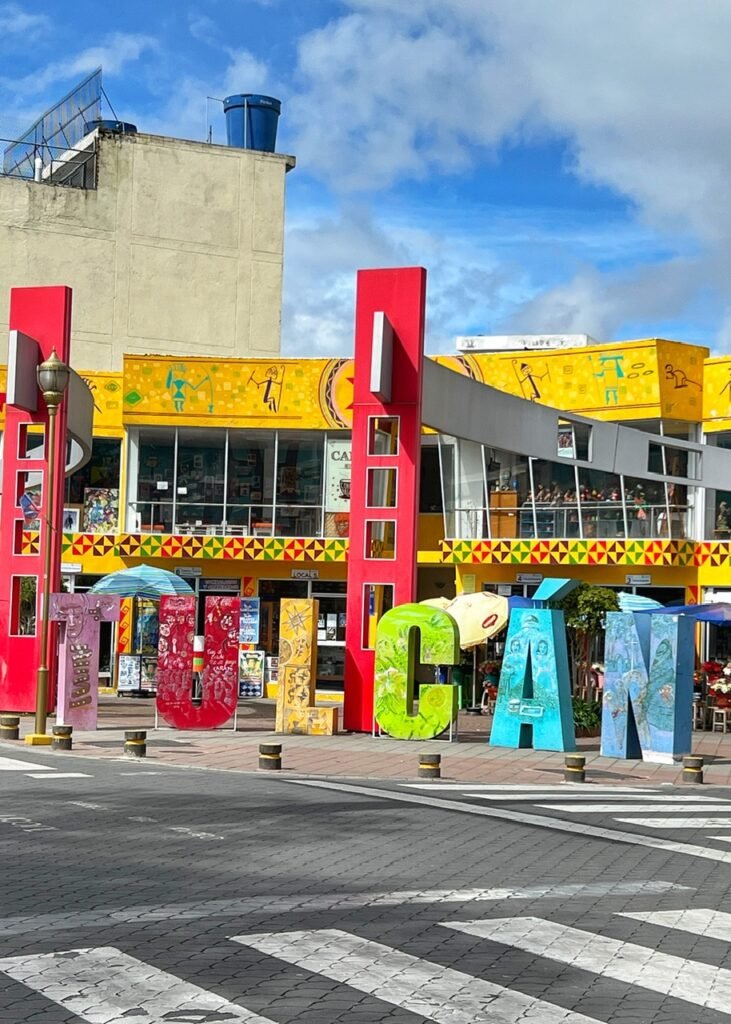
More color!! Colombia here we come!!

Fortunately, unlike some, Tulcan was very pleasant for a border town, and even offered a topiary wonderland in their local cemetery which the creator said “is so beautiful it invites one to die.” The topiary garden features animals, angels, Incan symbols, and bulbous, iconic creatures squatting in a row.

It was developed in 1936 when gardener Jose Maria Azael Franco, decided to take his caretaking job to the next level and began sculpting the rows of bushes under his care into a variety of shapes and designs.(Atlas Obscura)

The topiaries are interspersed with the graves which, like in many Latin America countries, are stacked above ground and not six feet under. A bizarre biblioteca of bodies.

From the mirador of the cemetery looking down. Some cuts even have an air of Ninja Turtle…🤨


It’s pretty remarkable that even after Franco’s death, his five children have managed to keep up his shrub sculptures. And they all seem a little bit different.

With all this maintenance, you’d think there would constantly be a hum of weed whackers and scissors, but we were surprised at the cemetery’s utter tranquility, especially surrounding, the “Altar of God.”
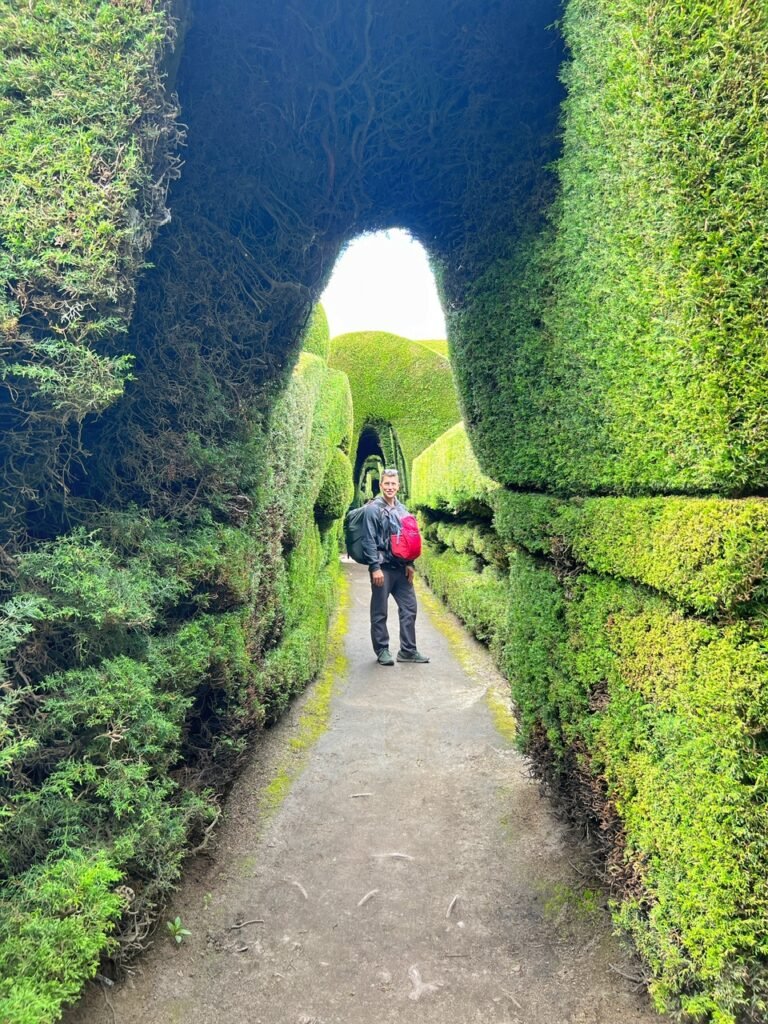

Greg winding through the labyrinth and a chain link…bush? And yes, we were of course carrying all our worldly belongings that day since we were in transit.

We got out alive! A bonus since most people don’t here?


From here, we took the collectivo from the southeast corner of the main square to the frontera (border) for $.75. We had to wait about 15 minutes for it to fill which was no big deal. Colectivos in Colombia are usually very comfortable and cheap.

When we arrived to the border, our collectivo pulled over in the lost land between the two countries. We changed some USDs for Colombian pesos for a fair rate from a pretty lady with a wad of cash and a melting vanilla ice cream cone. We then had to walk about 200 meters back to Ecuador migration to get our stamps out of the country, who as is common, seemed surprised to see a couple of Americans.

Before we turned around and walked into Colombia. The lady at migration there decided to be a bit snarky because she couldn’t find Mandy’s Ecuador exit stamp, although no other forms or documents were needed. Our passports are starting to get full! Life is so much easier since COVID slowed down.

On the next collectivo to Ipiales, we met Janet, her husband and their chihuahua, Dan-her. Yes, that’s like “danger” in English. How fitting for such an intimidating fellow. 🤣 Within the 15 minutes of chatting with them, they had given us their number and invited us to their house in Bogota. We just love Colombians. ❤️

Arriving to Ipiales, a border town that used to be a bit sketchy, but has really cleaned up their act in recent years (like a lot of Colombia), although we did get lots of “be carefuls” and warnings from locals because of the color of our skin.


It felt good to be off the beaten path again and we could definitely tell by the price of our private bed/bathroom hostal room for $11 (with Netflix!) We don’t think we’ve had this cheap of a room since Nepal! The Xantico Hostal court yard. We also had access to a kitchen.

